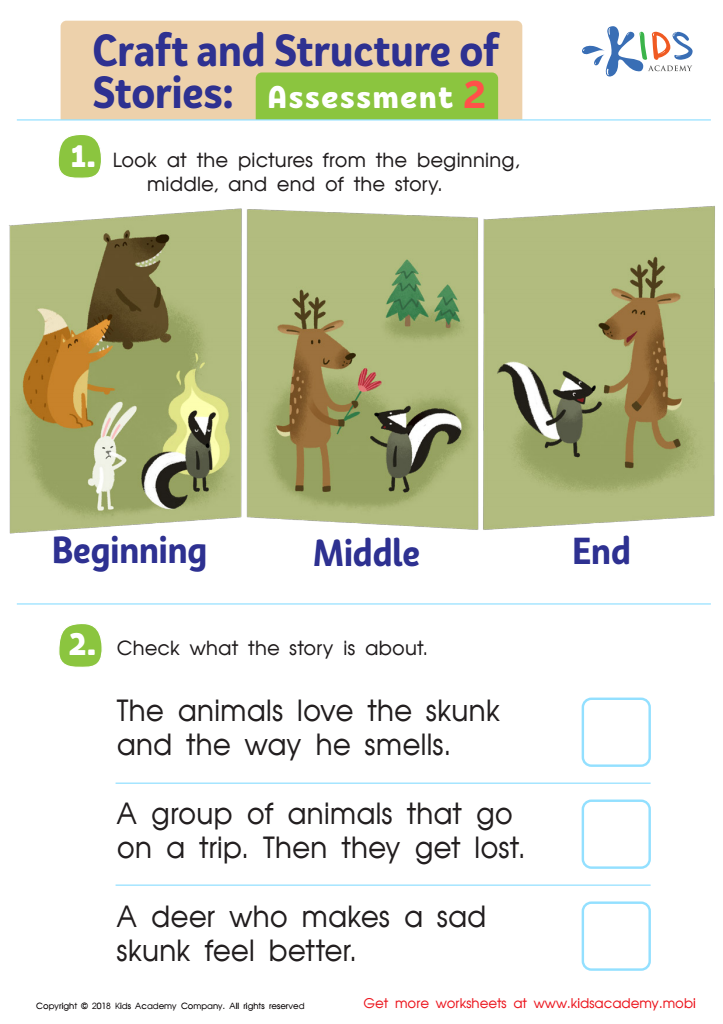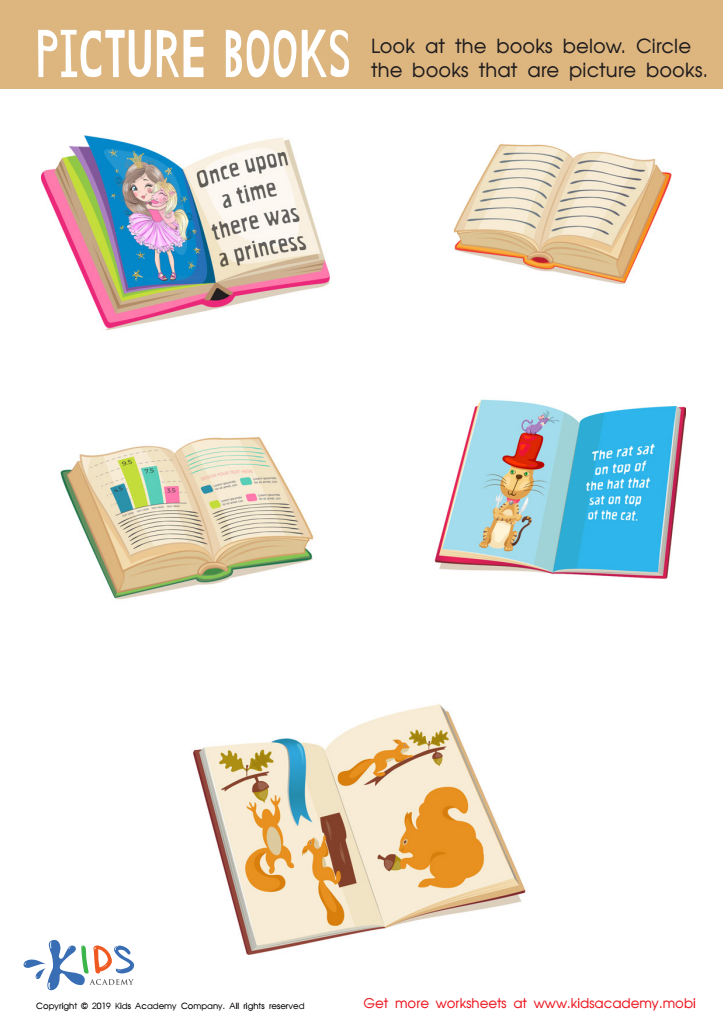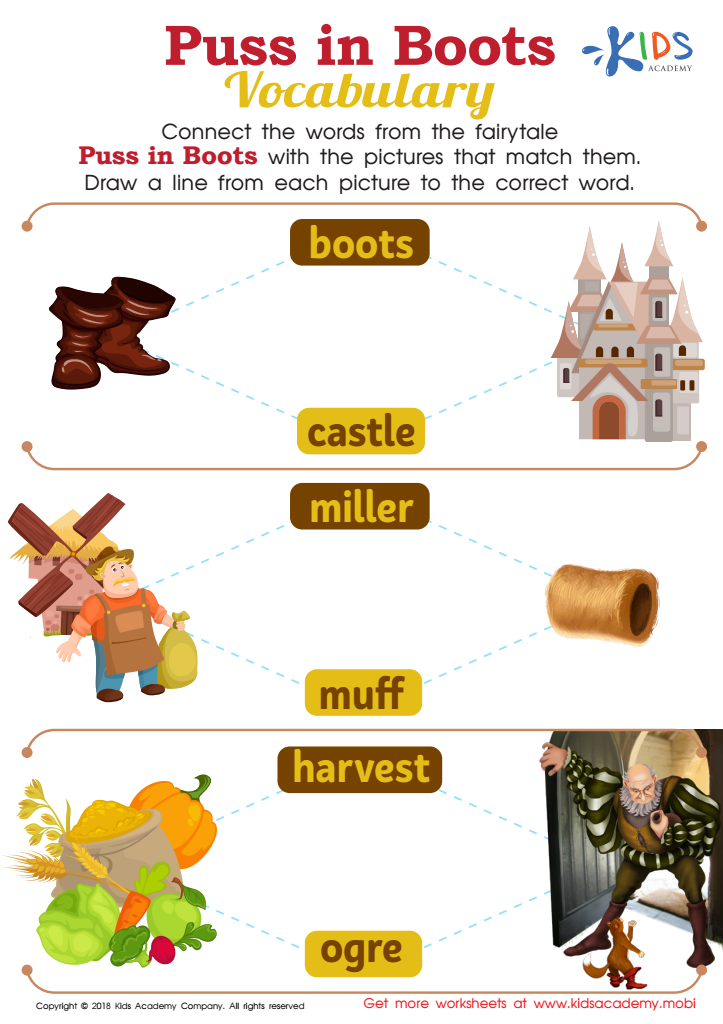Story analysis Normal Reading Worksheets for Ages 5-7
4 filtered results
-
From - To
Discover our engaging Story Analysis Normal Reading Worksheets designed specifically for children ages 5-7. These worksheets enhance critical reading skills by encouraging young learners to delve into the characters, settings, and plot structures of their favorite stories. With fun and age-appropriate activities, children will improve their comprehension abilities while fostering a love for reading. Each worksheet provides a unique approach to understanding storytelling elements, making learning both enjoyable and educational. Perfect for classroom use or at-home practice, our resources ensure that each child can enhance their analytical skills in an interactive way. Start exploring the world of stories today!


Key Details from the Princess and the Pea Worksheet


Craft and Structure of Stories: Assessment 2 Worksheet


Picture Books Worksheet


Puss in Boots Vocabulary Worksheet
Story analysis in young readers aged 5-7 is crucial for several reasons. At this stage, children are not just learning to decode words; they are beginning to understand narrative structures, character development, and themes. Engaging in story analysis enhances comprehension skills, helping children grasp main ideas and identify key details. This process cultivates critical thinking, as it encourages them to question motives, predict outcomes, and connect stories to their own experiences.
Furthermore, analyzing narratives fosters a love for reading, as children discover the richness of different interpretations and cultural perspectives within stories. This enjoyment can lead to increased motivation to read, which bolsters vocabulary and language skills essential for academic success. Through discussion of plots and characters, children also develop social-emotional skills, as they learn empathy by relating to characters' feelings and decisions.
Parents and teachers can use story analysis as a tool to create engaging and interactive discussions around books, inviting children to explore their ideas and insights. Ultimately, supporting this aspect of reading helps build a foundation for effective communication, critical thought, and a lifelong passion for literature. Making story analysis a core part of early education enriches not just literacy but overall cognitive development.
 Assign to My Students
Assign to My Students
















